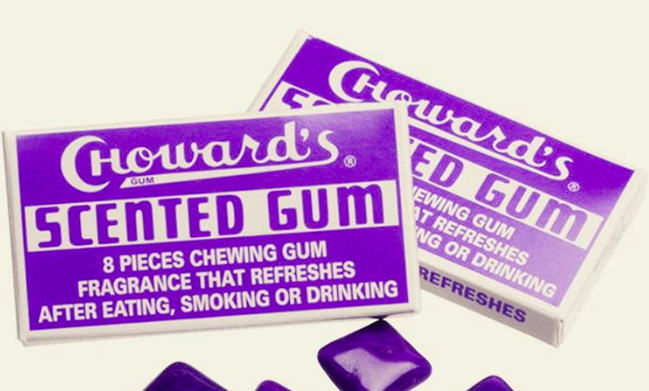The fashion trends, news stories, and politics may have been different one hundred years ago, but one thing has stayed the same since the early 1900s: people love candy. And they probably always will. Since humans began eating sugar in B.C. times, we haven’t been able to get enough of the sweet stuff. Some of the candy from the early 20th century looks a bit different than the stuff we’re used to seeing at our movie theater concession stands. But despite the whacky names and strange flavors, it’s all still candy at the end of the day.
As it turns out, a lot of the candy that was invented back during the turn of the century was so scrumptious, many people still eat modern versions of the treats today. Reese’s Peanut Butter Cups, Hershey’s Milk Chocolate Kisses, Toblerone, and Milky Ways are just some of the candies that were created before 1925.
So, yeah. Candy makers of yore certainly knew what they were doing back then.
We’ve collected some of the most obscure candies from the early 20th century — most of which are still available for purchase through vintage-themed candy websites. Click the links in each description to purchase a pouch of these historical sweets to get a feel for what people craved a century ago.
1. Bosco Bars
Based on the chocolate syrup with the same name, Bosco Bars rose to fame in the early 20th century after kids became obsessed with Bosco chocolate milkshakes. Both the syrup and the candy bar remained popular through the 1960s.
2. Bridge Mix
Bridge Mix — an assortment of chocolate-covered raisins, nuts, and malt balls — first became popular in the 1920s and stuck around bridge tables until the ’50s.
The small morsels were designed to be eaten with a single hand so that bridge players didn’t have to put their cards down to snack. Brilliant.
3. Potato Candy
Potato Candy was huge during the Great Depression.
It originated in Philadelphia, and is made with sugary mashed potatoes and peanut butter filling. It doesn’t sound very appetizing, but it’s supposedly delicious and easy to make.
4. Black Licorice Twists
Before the famous red, cherry-flavored Twizzlers came out, black licorice ropes were all the rage in the early 20th century. Black licorice may not be everyone’s cup of tea, but people today are still in love with the unique bitter flavor.
5. Anise Squares
Anise, which tastes similar to licorice, has been hailed as a digestive aid since the 1600s.
However, it wasn’t until the late-19th century and early-20th century that anise became a treat to eat rather than just something to settle your stomach.
6. Abba Zabba
Invented in 1922, Abba Zabba candy bars are taffy with a peanut butter center. They were reportedly most popular in the Western areas in the United States with their hard-to-miss taxi cab packaging.
7. Mothballs
Mothballs didn’t always have their gross name. They actually date back to the 1700s when they were known as “cream filberts” or “sugarplums.”
Then, in the 1940s, the nutty, sugar-coated crunchy candy was renamed “mothballs.” How sad. We especially like “sugarplums.”
8. Candy Cigarettes
Candy cigarettes can still be found in several old-timey penny candy stores. They first came about in the late 1800s when candy makers wanted to market grown-up things to kids. In the 1940s, candy cigarettes were made into bubblegum.
And yes, parents then expressed concerned about the consequences of their kids eating candy cigarettes just as they do now.
9. Sea Foam Candy
Called such because of its puffy, light-as-air appearance, Sea Foam, also called Sponge Candy, started out in Canada in the 1800s. By the mid-1900s it was a popular treat in Upstate New York and Massachusetts.
But don’t be fooled — this candy is not as delicate as it seems. It’s actually crunchy.
10. Boston Baked Beans
Still popular with many today, Boston Baked Beans — sweet, sugar-coated roasted peanuts — were actually invented in Pittsburg in the 1930s. They’re supposedly named after the beans the Native Americans of Massachusetts would eat.
11. Wax Lips
Why wax lips are considered candy is still a mystery to us. They’re not edible (they’re made from paraffin wax), they have no flavor, and are seemingly pointless.
Wax lips because popular with kids in the early 1900s, and where then made by produced by the petroleum industry. Gross.
12. Cherry Mash
The Cherry Mash candy bar was invented in 1918 at the Chase Candy Company. The Cherry Mash coating consists of a quarter-pound mound of chopped, roasted peanuts coated in chocolate. And the center boats a bright-red cherry fondant filling.
13. Turkish Taffy
First invented in 1912 when a candy maker added too many egg whites to their marshmallow recipe, Turkish Taffy rose to fame in the ’20s. The appeal of the treat came from the fact that you have to “smack it” and “crack it” in order to break it into edible pieces.
The hard taffy then melts in your mouth.
14. Flicks
Flicks chocolate candies were created in 1904 and now come in both milk and dark chocolate varieties.
They’re simple, sweet, and it’s been proven impossible to eat just one.
15. Cayenne Bullets

True Treats Historic Candy
If the cinnamon-flavored Red Hots, invented in the 1930s, aren’t doing it for you, try out these Cayenne Bullets, also from the 1930s.
They’re sugar-free, and bound to make your taste buds sizzle.
16. Choward’s Violet Gum
What set Choward’s gum apart from the rest was the unique violet scent and flavor. It was first invented in the 1930s and was a surprising hit to those who gave it a try.
17. Clove Candy
After the clove spice became popular (once it travelled out of Asia), candy makers of the late 1800s began incorporating clove into sweet treats.
These spicy clove orb candies became popular at the end of the 19th century and remained a hit throughout the early 20th century.
18. Contraband
Contraband, which is a hard candy that is a mix of molasses and peppermint, was first created in the 1800s and called something different. But by 1930s, candy makers dubbed the treat “contraband,” possibly due to Prohibition’s influence or because candy makers would give kids broken pieces of it on their way to school where candy was forbidden.

